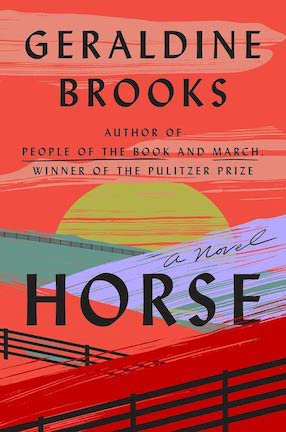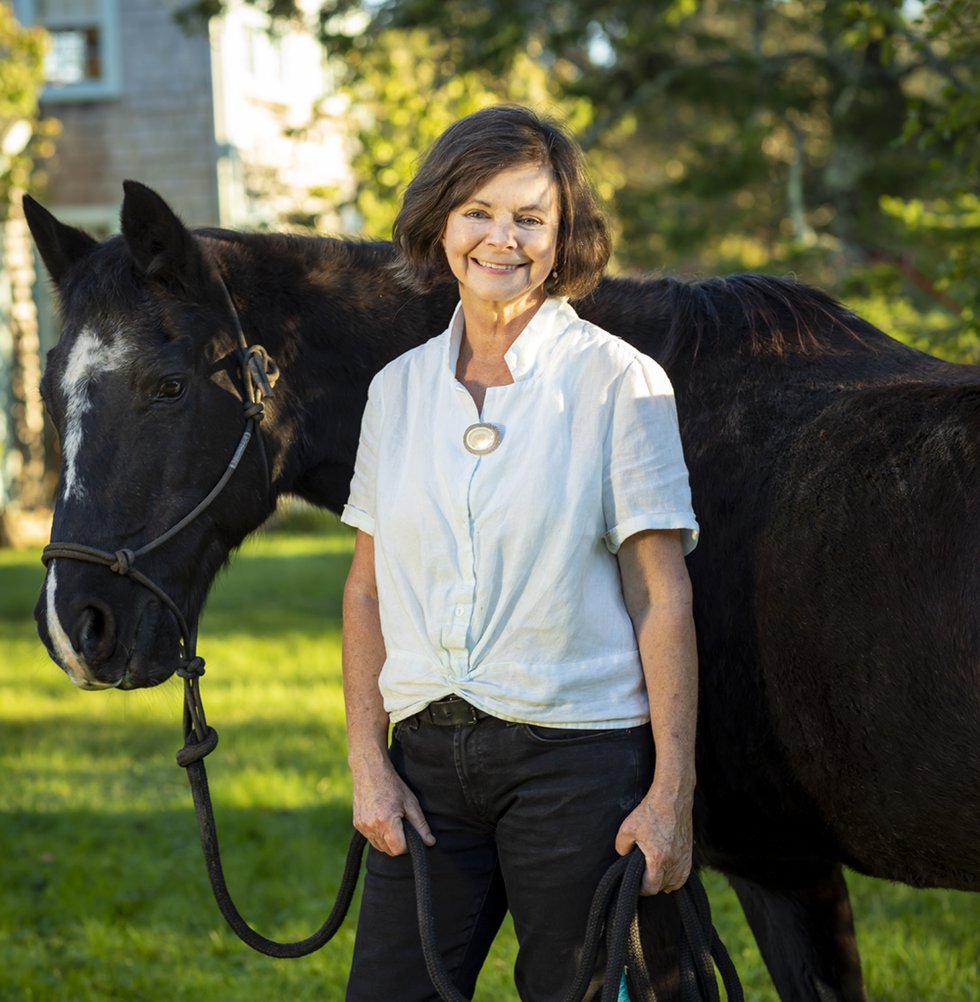Brook’s sixth novel dives into the life of the great racehorse Lexington and his trainer Jarret.

(Painting by Edward Troye)
Horse by Geraldine Brooks. Viking. pp.416. $28
“To be alive is to be in perpetual conflict,” is Sartre being a classic cynic but also a truth-teller. Conflict is everything in a novel, nothing moves forward without it. Geraldine Brooks’ previous Pulitzer prize-winning novel, March (2005), occurs during a war—what better place for antagonism and drama. It is a novel that retells Louisa May Alcott’s book Little Women from the point of view of the March family’s absent father. And if conflict is the chief narrative driver, perspective is the paramount backseat driver—not only for revealing said conflict but for understanding it and its, hopeful, resolution.

Her latest book, Horse (2022), returns to the 1850s and Civil War era but jumps to the present as well. Theo is the son of foreign diplomats and a graduate student living in Washington D.C. When he sees a painting of a white-socked horse his neighbor is throwing out, he knows there’s something special there—he is, after all, doing his Ph.D. on equestrian art of the antebellum South.
Then shifting to the past and the “gallant South,” we get a glimpse of Kentucky and the world of horse racing in all its glory (and gory glitter). Jarret is an enslaved groom and trainer who is akin to horses as Mozart is to music. His father, Harry Lewis, has recently bought himself out of bondage but continues to work for Dr. Elisah Warfield (his former owner) as head trainer and stable manager. When a foal (later named Lexington) comes along, Jarret’s skill is proven, but his life is propelled outside his relativity quiet, insulated life.
Being a horse lover and a rider herself, Brooks easily gives details and descriptions about equines and the sports they participate in. Her knowledge not only builds the world, past and present, but it gives it a human warmth—a love that alights on the page, passed on to the reader. In an interview, she said, “that someone rises from the grave and begins to talk to me.” Her work has focused on such deceased characters like Anna Firth, a girl living during the bubonic plague; King David from the bible; and the first Native American, Caleb Cheeshahteaumauk, to graduate from Harvard—in 1665. These characters are unearthed like found bones and a skeleton is created and even added to. Those in her sixth novel are no different.

Horse trots along at a pleasant pace; the chapters making sure the plot doesn’t get mired in its machinations. Jarret and Lexington’s journey to horse stardom and Civil War tensions is nicely paralleled by Theo’s work on identifying his mysterious painting (which happens to be by painter Thomas J. Scott) and meeting Jess—the Australian-born zoologist restoring Lexington’s skeleton found in the Smithsonian attic. Through these narratives, Brooks weaves in the racism of the past and its continued presence nowadays. Yet, the ending “incident” with Theo and Jess seems a bit heavy-handed, even if it remains realistic and altogether relevant. And for someone with such skill at creating a mostly fictitious history and using it to bring the past into conversation with the present, the side story of Jackson Pollock and his patron Martha Jackson seems a bit untethered. Yes, it is an explanation for how Scott’s “Lexington” painting survived. But also could have been a bit more in the background perhaps—not given its own three or four chapters.
All things considered, Brooks handles her horse book with a firm grasp on the reins. Like equine super fan Jane Smiley’s Perestroika In Paris, a real love of animals is present, allowing the reader to easily empathize and align with Jarret and Theo (whose dog, Clancy, is your typical loving mutt). Horse is enjoyable and gives subtle shocks here and there, realizations into untold truths, and includes the best kind of love story—one without the melodrama of two human participants. Like Lexington’s skeleton and story, history may be kept hidden in someone’s attic or thrown out in a junk pile with a sign marked “free,” but if we take care to look and examine what’s around us, it’ll never be lost. After all, there’s always a writer willing to track down the clues and create opportunities to connect with others—fictitious, four-legged, or departed.
Buy a copy at The Bookshop.









